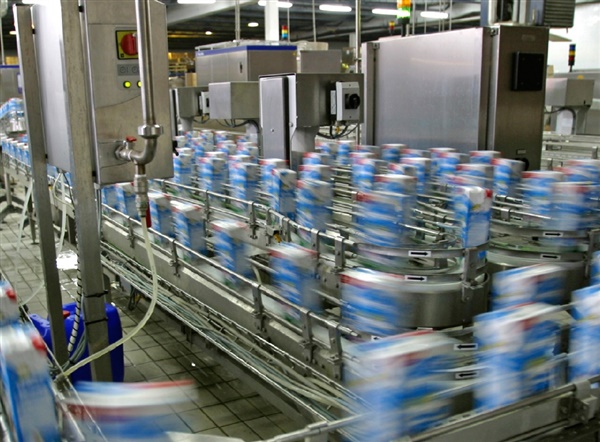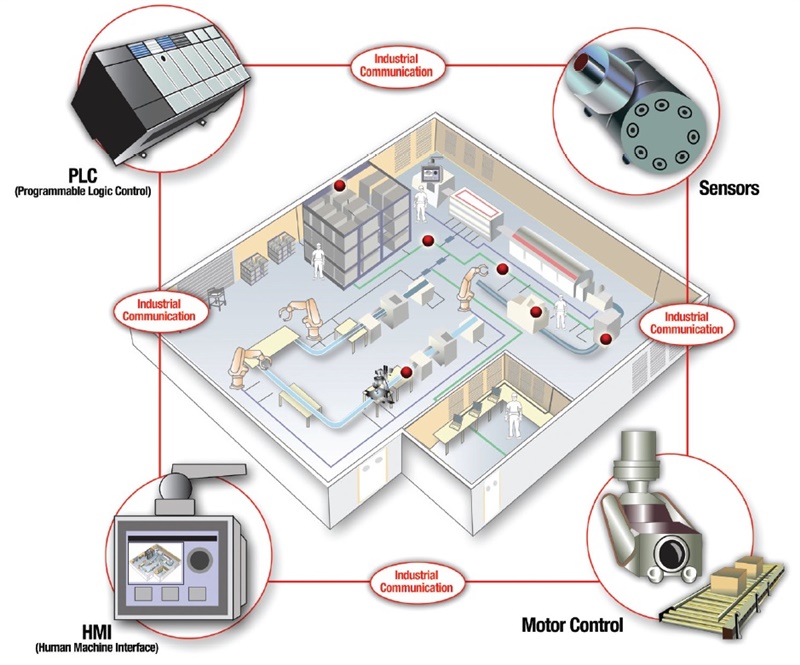SSZTCO1 june 2015 RF430CL330H
In the past, factories focused on producing big volumes of products to gain the benefits of manufacturing scale: lower unit cost and higher quality levels. Today, consumers own products for shorter life cycles and demand more choice, which in turn requires manufacturers to run production lines that can adapt quickly and produce smaller lot sizes without incurring long downtimes for retooling and adaptation.
To provide this type of nimble production model, the smart factory is rapidly taking shape in today’s industries, applying more electronic intelligence, even down to the smallest subsystem.

Take an example like a simple automated screwdriver tool on a car manufacturing floor. To attach parts made of different kind of materials, ranging from steel to carbon to plastic, the torque at which the screws need to be tightened will vary. The tool needs to automatically adapt and not wait for a higher control system to determine which step and parameter to take. The part itself carries the information on the material and torque required. Just before the part reaches the screw driver, it transmits the relevant parameters to the screw driver so the tool can apply the correct strength. The data is stored in and eventually transmitted by an embedded intelligent electronic system that is attached to the part.
The technology used for such intelligent systems could include microcontrollers (MCUs) like TI’s ultra-low power MSP430™ MCU family and wireless technologies like RFID or NFC provided by devices like TI’s RF430CL330H. The underlying technology that enables such smart and decentralized processes, systems and architectures is shown in Figure 1. It includes sensors, data acquisition, and communication and control intelligence, which is often provided by embedded processors, wireless connectivity and analog integrated circuits (ICs).
 Figure 1 Sensor, Control, Interface and
Communication Technologies Based on Analog and Embedded Processing Will Work
Together in the Smart Factory of the Future.
Figure 1 Sensor, Control, Interface and
Communication Technologies Based on Analog and Embedded Processing Will Work
Together in the Smart Factory of the Future.Embedded processors, industrial communication, microcontrollers with RF interfaces and analog components for the signal processing are already used in factory environments, and the development of more application-specific standard products will enable new, more sophisticated applications to fuel the growth of smarter systems. Since manufacturing lines are built to last and overall systems are complex, customers developing factory automation and control applications have long-term strategies that require support from partners who work closely with them, while also providing a broad portfolio of products and solutions. TI is a leading IC supplier to the industrial market and is well positioned to support the smart factory with products like sensors, analog front ends (AFEs), MCUs, wired and wireless communication, processors, and signal chain and power management products.
Watch for future posts on the Industrial Strength blog, where we will continue to explore how analog and embedded processing ICs are helping engineers achieve efficiency and flexibility in smart factory equipment designs.
Where do you see the greatest opportunity for ICs to make factories smarter? Log in to share your thoughts in the comments below.
Additional Resources:
- Search for TI Designs for factory automation and control.
- See how future sensor interfaces like IO-Link can enable more intelligent sensors with the Turnkey IO-Link Sensor Transmitter reference design.
- Explore how TI’s technology enables contactless interfaces to smart sensors for calibration and configuration using NFC technology.
- Check out a reference design that shows how TI’s technology enables flexibility when using multi-protocols for industrial Ethernet.
- Watch a video on how TI engineers industrial innovation.